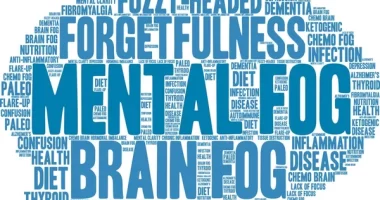Diabetic dyslipidemia is a multifaceted metabolic disorder characterized by aberrant lipid profiles in individuals with diabetes mellitus. This intricate condition often goes unnoticed, yet it can significantly contribute to the already heightened cardiovascular risk associated with diabetes. In this comprehensive article, we will delve into the signs and symptoms of diabetic dyslipidemia, explore its various types, examine the underlying causes, identify the pertinent risk factors, and discuss the treatment modalities available to manage this condition effectively.
Table of Contents
Understanding Diabetic Dyslipidemia
Diabetic dyslipidemia, as the term suggests, is a specific type of dyslipidemia prevalent in individuals with diabetes. It refers to an abnormality in lipid metabolism characterized by elevated levels of triglycerides, low-density lipoprotein cholesterol (LDL-C), and reduced levels of high-density lipoprotein cholesterol (HDL-C). This imbalance in lipid levels can contribute to the development of atherosclerosis and increase the risk of cardiovascular events, such as heart attacks and strokes.

Types of Diabetic Dyslipidemia
Diabetic dyslipidemia manifests in various forms, each with its unique lipid profile. Understanding these types is essential for effective diagnosis and management:
- Mixed Hyperlipidemia: This type is characterized by elevated levels of both LDL-C and triglycerides. It is commonly observed in individuals with poorly controlled diabetes.
- Low HDL-C: Here, the primary concern is the reduced levels of HDL-C, which plays a vital role in removing excess cholesterol from the bloodstream. Low HDL-C levels are often associated with insulin resistance.
- High Triglycerides: Elevated triglyceride levels, known as hypertriglyceridemia, can exacerbate the risk of pancreatitis and cardiovascular disease in diabetic individuals.
- High LDL-C: Elevated LDL-C, often referred to as “bad cholesterol,” is a significant risk factor for atherosclerosis and coronary heart disease in diabetics.
Signs and Symptoms of Diabetic Dyslipidemia
Diabetic dyslipidemia is often asymptomatic in its early stages, making it crucial for individuals with diabetes to undergo regular lipid profile assessments. Nevertheless, some signs and symptoms may manifest as the condition progresses:
- Xanthomas: These are fatty deposits that accumulate under the skin, often seen as yellowish nodules or plaques. Xanthomas can develop on various body parts, such as the elbows, knees, or eyelids.
- Angina: Chest pain or discomfort may occur due to reduced blood flow to the heart muscle, caused by atherosclerosis triggered by high LDL-C levels.
- Pancreatitis: Elevated triglycerides can lead to inflammation of the pancreas, resulting in severe abdominal pain and digestive disturbances.
- Cardiovascular Events: The ultimate consequence of untreated diabetic dyslipidemia can be life-threatening cardiovascular events, including heart attacks and strokes.
Causes of Diabetic Dyslipidemia
Several interrelated factors contribute to the development of diabetic dyslipidemia, including:

- Insulin Resistance: Insulin resistance is a hallmark of type 2 diabetes, and it directly impacts lipid metabolism. When cells become resistant to insulin, it leads to increased triglyceride production in the liver.
- Genetic Predisposition: Some individuals have a genetic predisposition to dyslipidemia, which becomes exacerbated when combined with diabetes.
- Uncontrolled Diabetes: Poorly managed diabetes results in elevated blood sugar levels, which can lead to alterations in lipid metabolism.
- Obesity: Excess body fat, particularly abdominal fat, is closely associated with diabetic dyslipidemia.
- Dietary Habits: Diets high in saturated fats, trans fats, and refined sugars can worsen lipid profiles in diabetic individuals.
Risk Factors for Diabetic Dyslipidemia
In addition to the causes mentioned above, several risk factors can heighten the likelihood of developing diabetic dyslipidemia:
- Duration of Diabetes: The longer an individual has diabetes, the greater the risk of developing dyslipidemia.
- Age: Older adults with diabetes are more susceptible to dyslipidemia.
- Gender: Men with diabetes tend to have a higher prevalence of dyslipidemia than women.
- Smoking: Tobacco use exacerbates the risk of cardiovascular complications in diabetics, including dyslipidemia.
- Sedentary Lifestyle: Lack of physical activity is a significant risk factor, as exercise plays a vital role in maintaining healthy lipid levels.
Diagnosis of Diabetic Dyslipidemia
Diagnosing diabetic dyslipidemia involves a comprehensive assessment of lipid profiles through blood tests. Key lipid parameters include:
- Total Cholesterol (TC): The sum of LDL-C, HDL-C, and triglycerides.
- LDL-C: Often referred to as “bad cholesterol,” high levels of LDL-C are a primary concern.
- HDL-C: Low levels of HDL-C, the “good cholesterol,” are associated with increased risk.
- Triglycerides: Elevated triglycerides are common in diabetic dyslipidemia.
Treatment and Management
Managing diabetic dyslipidemia is crucial in reducing the risk of cardiovascular complications. Treatment strategies may include:
- Lifestyle Modifications: Encouraging individuals to adopt a heart-healthy diet, engage in regular physical activity, quit smoking, and limit alcohol intake can have a significant impact on lipid profiles.
- Medications: Depending on the specific lipid profile and individual risk factors, healthcare providers may prescribe medications such as statins, fibrates, or niacin to manage dyslipidemia.
- Insulin and Glucose Control: Tight glycemic control can help improve lipid profiles in individuals with diabetes.
- Weight Management: Achieving and maintaining a healthy weight is essential in managing dyslipidemia, as excess body fat contributes to insulin resistance and elevated triglycerides.
Lifestyle changes
Lifestyle changes that can help to improve diabetic dyslipidemia include:
- Eating a healthy diet: A healthy diet for diabetic dyslipidemia is low in saturated and trans fats and high in fiber. It should also include plenty of fruits, vegetables, and whole grains.
- Exercising regularly: Aim for at least 30 minutes of moderate-intensity exercise most days of the week.
- Losing weight if overweight or obese: Losing even a small amount of weight can help to improve diabetic dyslipidemia.
What Expert Says
Here is what some experts say about diabetic dyslipidemia:
- Dr. Robert Eckel, director of the Cardiovascular Institute at the University of Colorado: “Diabetic dyslipidemia is a serious condition that can increase the risk of heart disease, stroke, and other cardiovascular problems. It is important for people with diabetes to have their blood lipid levels checked regularly and to work with their doctor to develop a treatment plan that is right for them.”
- Dr. Alan Garber, chief medical officer of the American Diabetes Association: “Statins are the first-line treatment for diabetic dyslipidemia. They are very effective at lowering LDL cholesterol levels and reducing the risk of cardiovascular problems. However, not everyone can tolerate statins, and some people may need to take other medications, such as fibrates or niacin.”
- Dr. Mary Ann McLaughlin, director of the Cardiometabolic Risk Reduction Program at the Cleveland Clinic: “Lifestyle changes are an important part of managing diabetic dyslipidemia. Eating a healthy diet, exercising regularly, and losing weight can all help to improve blood lipid levels and reduce the risk of cardiovascular problems.”
Overall, the experts agree that diabetic dyslipidemia is a serious condition that requires treatment to reduce the risk of cardiovascular problems. Statins are the first-line treatment for diabetic dyslipidemia, but other medications may be needed for people who cannot tolerate statins. Lifestyle changes are also an important part of managing diabetic dyslipidemia.
Conclusion
In summary, understanding and addressing diabetic dyslipidemia is paramount for individuals with diabetes to mitigate their cardiovascular risk. Early diagnosis through regular lipid profile assessments, coupled with lifestyle modifications and appropriate medical interventions, can significantly improve lipid profiles and reduce the risk of heart disease and other complications associated with this condition. Awareness of the signs and symptoms, types, causes, and risk factors for diabetic dyslipidemia empowers individuals to take proactive steps toward better health and well-being.









